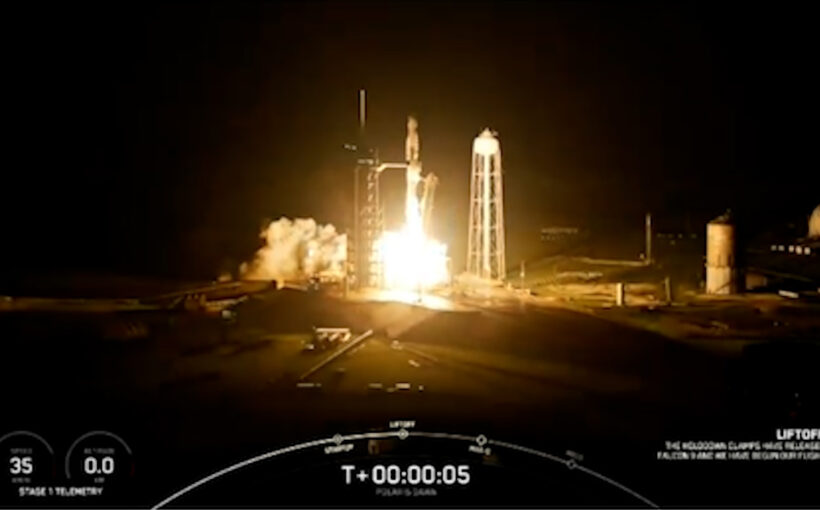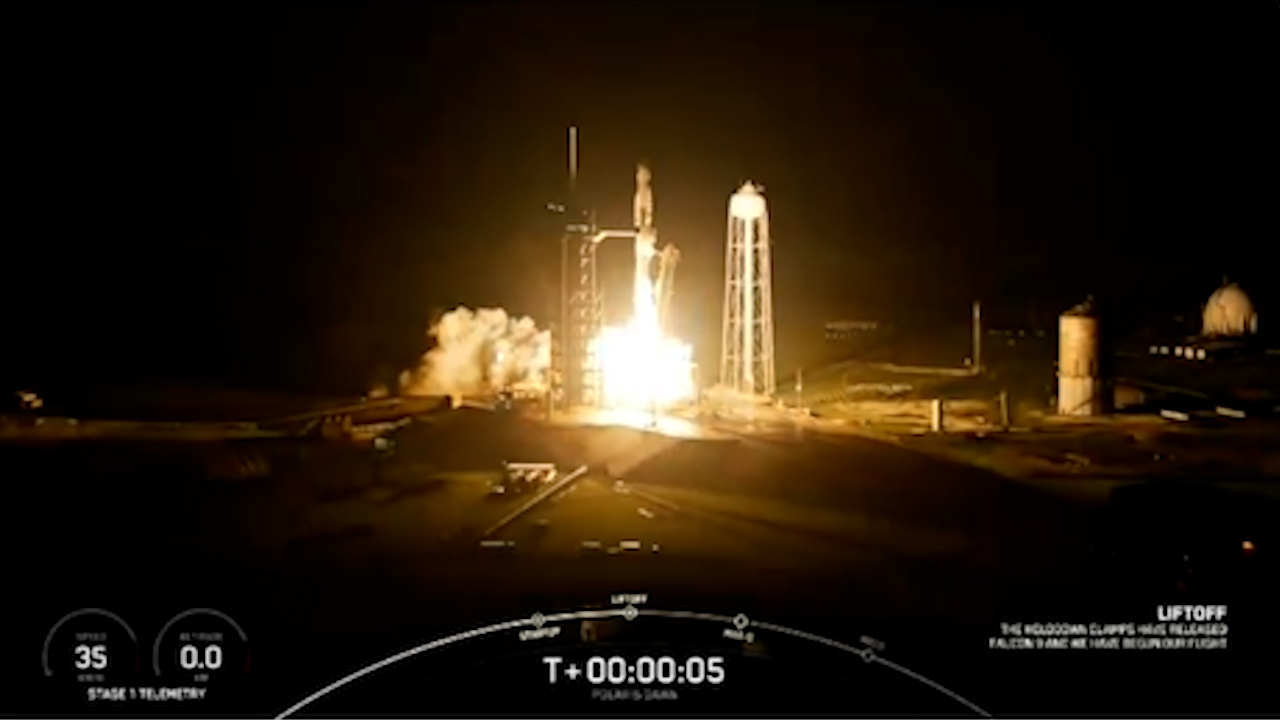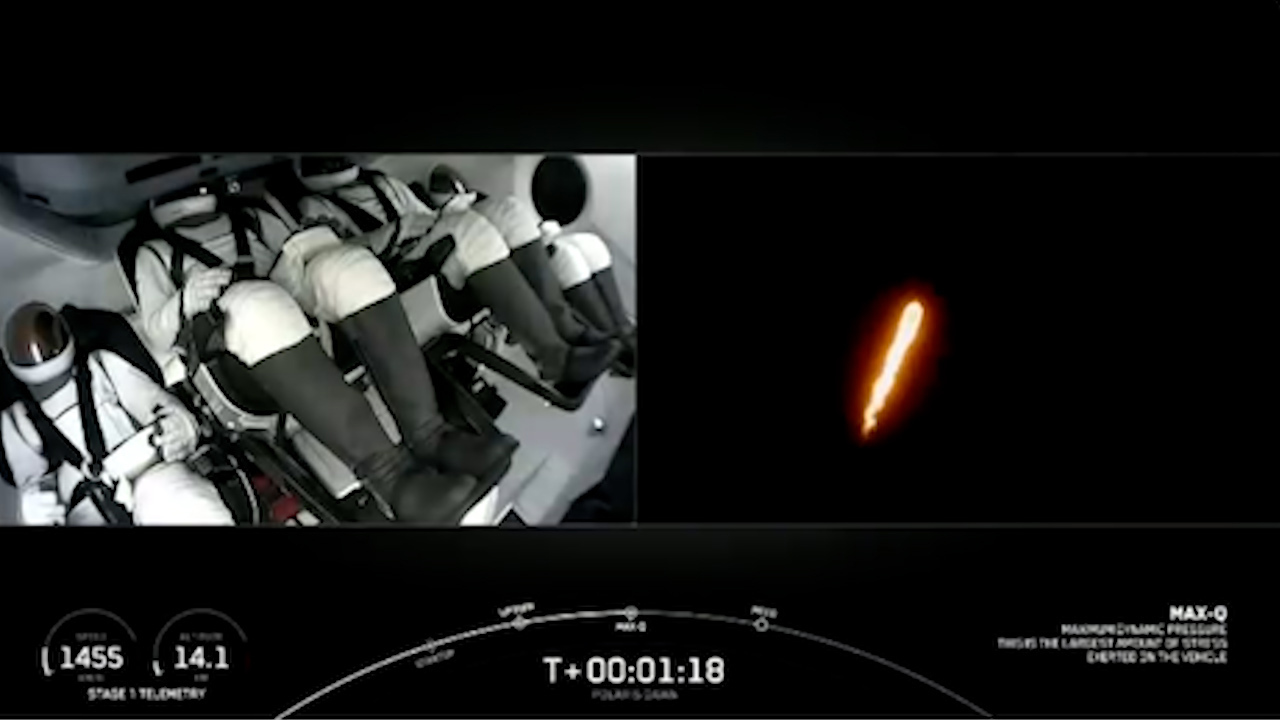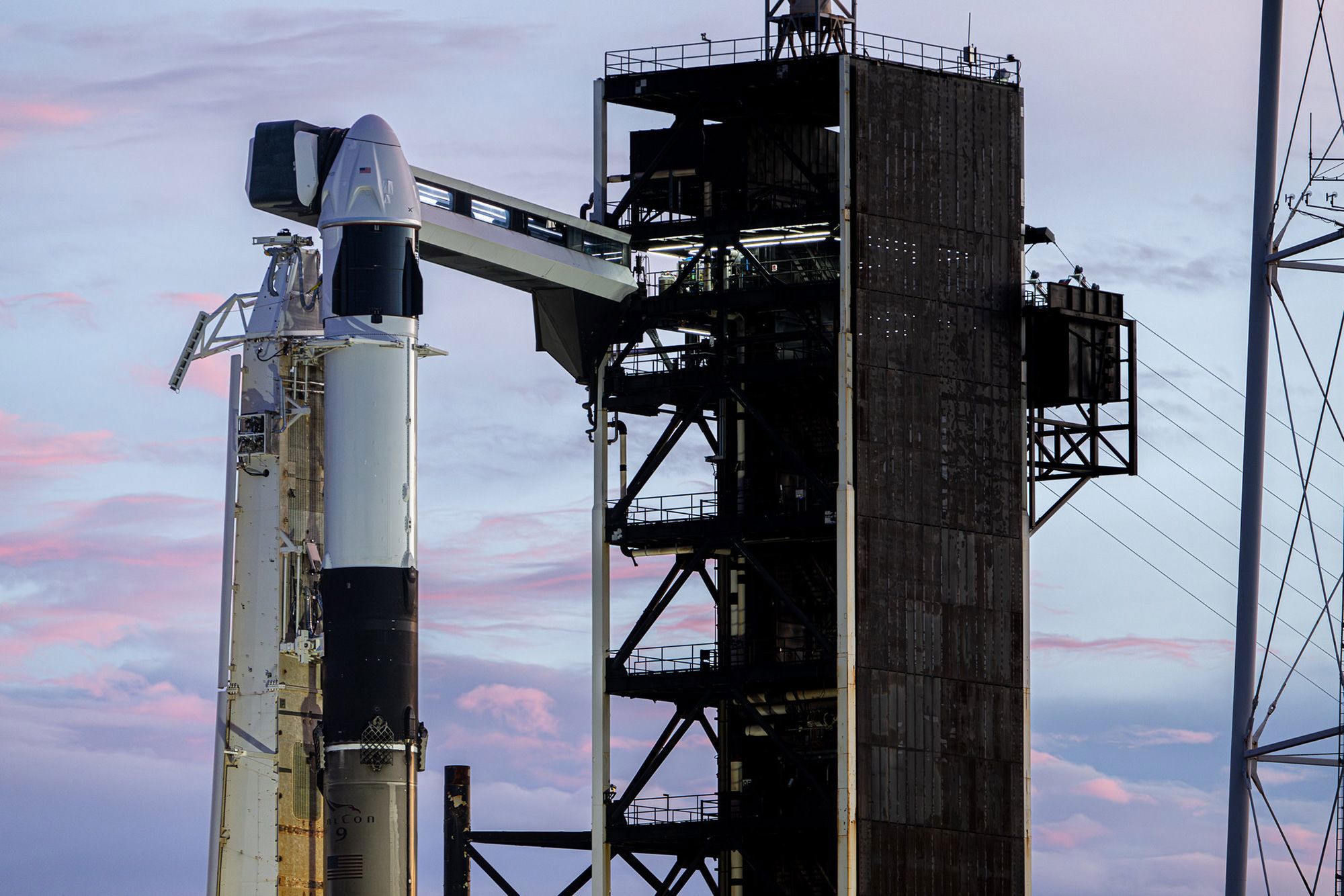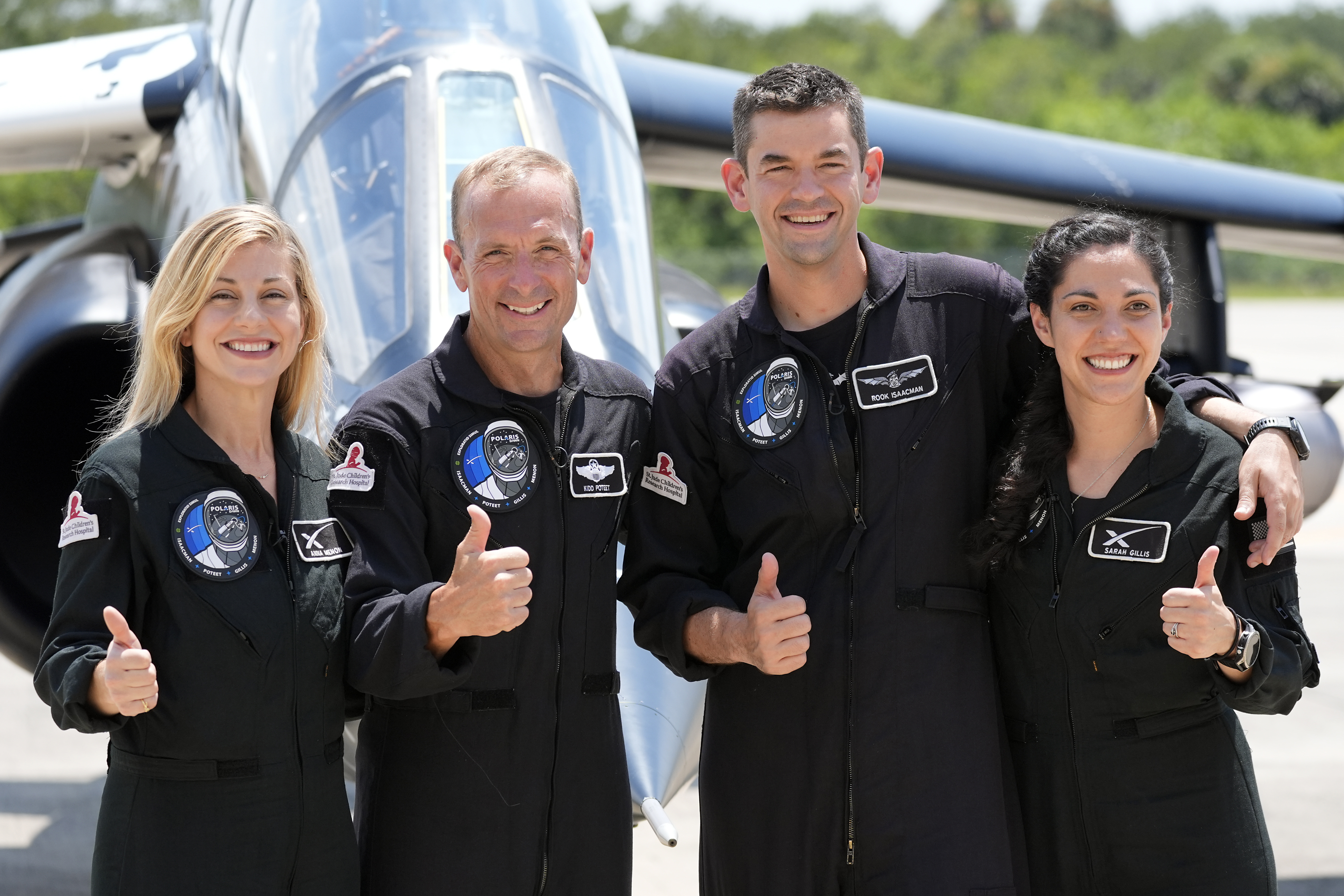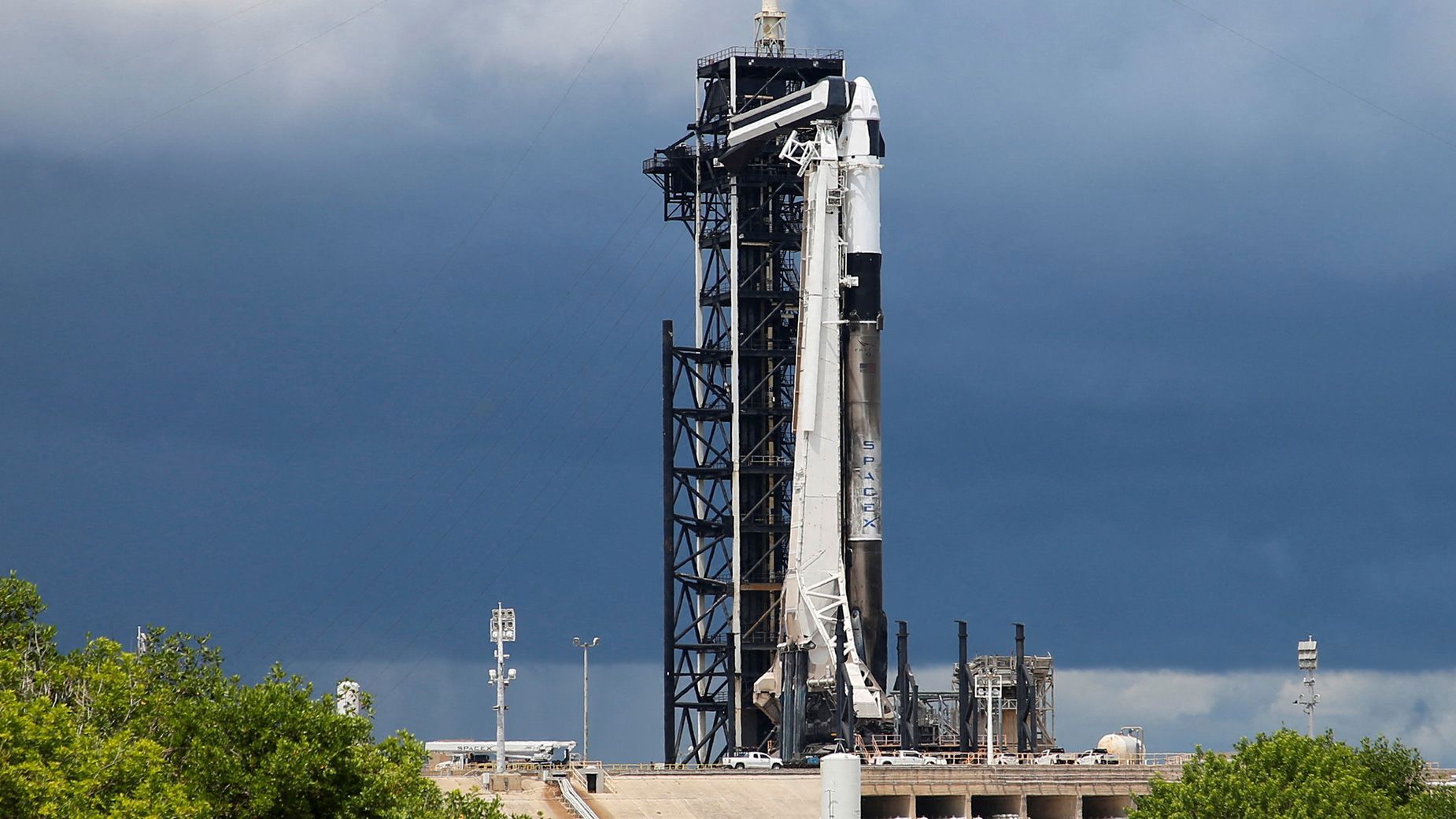SpaceX's latest mission — a bold and risky trek into Earth's Van Allen radiation belts by a four-person crew of civilians who will also aim to conduct the first commercial spacewalk — has taken flight.
The mission, dubbed Polaris Dawn, lifted off at 5.23am ET (7.23pm AEST).
SpaceX livestreamed the event on X, the social media platform formerly known as Twitter that CEO Elon Musk purchased in 2022.
READ MORE: Two children found dead at home in Blue Mountains
As the capsule entered Earth's orbit, ground controllers, led by SpaceX launch director Frank Messina, offered words of encouragement to the Polaris Dawn crew, which includes the first SpaceX employees ever to venture to space.
"As you gaze towards the North Star, remember that your courage lights the path for future explorers. We trust your skills, your bravery, and your teamwork to carry out the mission that lies ahead," they said.
"Know that the entire team back here is with you every step, watching, supporting and cheering you on as you walk into space. We're sending you hugs from the ground."
This launch comes after several weather delays in late August and earlier in the morning on Tuesday hampered the Polaris Dawn crew's efforts to get off the ground.
Further complicating launch prospects was the fact that SpaceX didn't just need clear weather for the mission to take off — it needed to ensure there are calm waters and winds as the crew will return from space after a five-day excursion.
Timing their return could be critical. Because carrying out a spacewalk will create a drain on oxygen supplies, the Polaris Dawn mission will have only enough life support for five or six days in space.
READ MORE: Father tells bus driver of 'irreparable void' left after Hunter Valley bus crash
First, a problem with ground equipment at the launch site pushed the target date by 24 hours, then weather forecasts forced SpaceX to waive off two more attempts.
Around the same time, a Falcon 9 — the type of rocket that will power Polaris Dawn's ride to space — malfunctioned during a routine satellite mission, prompting federal regulators to briefly stop all Falcon 9 rockets from flying.
SpaceX received permission on August 30 to return to the Falcon 9 to flight.
Now, the company is trying again to kick off one of its riskiest missions to date, though weather could still thwart the upcoming launch attempt.
The latest forecast puts the odds of unfavorable conditions for a Tuesday launch at 60 per cent, according to a post made by SpaceX on X.
Further complicating launch prospects is the fact that SpaceX doesn't just need clear weather for the mission to take off — it needs to ensure there are calm waters and winds as the crew returns from space after their five-day excursion.
Timing their return could be critical.
Because carrying out a spacewalk will create a drain on oxygen supplies, the Polaris Dawn mission will have only enough life support for five or six days in space.
The ride to orbit
After the countdown clock struck zero, SpaceX's Falcon 9 rocket roared to life, sending a blinding blaze and deafening blast across the launch site at NASA's Kennedy Space Center in Florida.
The crew rode atop the rocket, strapped inside an igloo-shaped SpaceX Crew Dragon capsule, which measures about four metres across at its base, as the rocket tears away from the grips of Earth's gravity.
After firing for 2½ minutes, the bottommost part of the Falcon 9 rocket — called the first stage — spent most of its fuel.
READ MORE: 'Danger to our national security': Retired generals issue dire Trump warning
At that point, the first stage detached from the rocket's second stage as the upper portion fires up its engine and continues propelling the Crew Dragon spacecraft to faster speeds.
Meanwhile, the first stage of the Falcon 9 guided itself back to Earth to land on a seafaring platform so it could be refurbished and used again on future missions.
That's a signature SpaceX move that the company said helps reduce the cost of rocket launches.
To enter Earth's orbit, the Falcon 9 rocket needed to hit more than 27,358km/h, or "orbital velocity".
When it reached the desired speed, the Crew Dragon broke away, left to navigate the vacuum of space using only its onboard thrusters for the remainder of the mission.
First commercial spacewalk attempt
Polaris Dawn is the brainchild of SpaceX and Jared Isaacman, the billionaire founder of financial technology firm Shift4 Payments, who made his first foray into spaceflight with the Inspiration4 mission in September 2021.
This flight, however, is not a joyride.
Isaacman and his crewmates — including close friend and former US Air Force pilot Scott "Kidd" Poteet as well as SpaceX engineers Anna Menon and Sarah Gillis — hope to rack up several superlatives on this mission.
First, the SpaceX capsule aims to carry the crew to record-setting heights for an orbit around Earth, surpassing the milestone set by NASA's 1966 Gemini 11 mission, which reached 1373 kilometres.
READ MORE: Touching gesture for family of baby scalded with hot coffee in Brisbane
If successful, Polaris Dawn would beat that record by about 32 kilometres.
The Polaris Dawn spaceflight would also be the highest any human has flown since NASA's Apollo program — which ended in 1972 and cumulatively carried 24 astronauts about 400,000 kilometres to the moon rather than stopping in Earth's orbit.
Polaris Dawn may also mark the farthest any woman has ever gone into space.
To kick off day three of this mission, the civilian crew, while orbiting at a lower altitude of about 700 kilometres above Earth, will attempt a history-making spacewalk.
The endeavour will be hazardous, exposing all four crew members and the Crew Dragon's interior to the vacuum of space. Such a situation may make it difficult to relock the vehicle's hatch due to differences in pressure.
And exposure to the vacuum may cause toxins to be released from hardware when the cabin is repressurised, though SpaceX said it has taken steps to prevent this.
FOLLOW US ON WHATSAPP HERE: Stay across all the latest in breaking news, celebrity and sport via our WhatsApp channel. No comments, no algorithm and nobody can see your private details.
